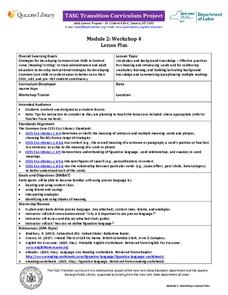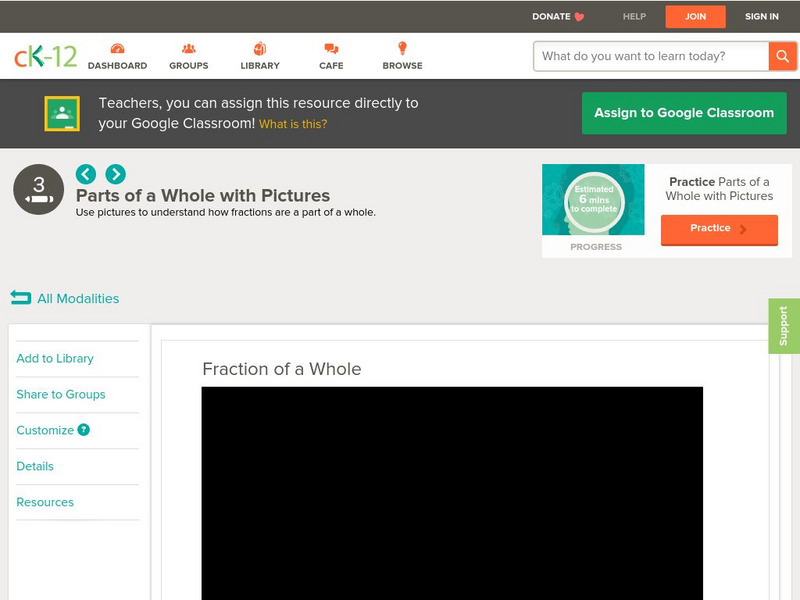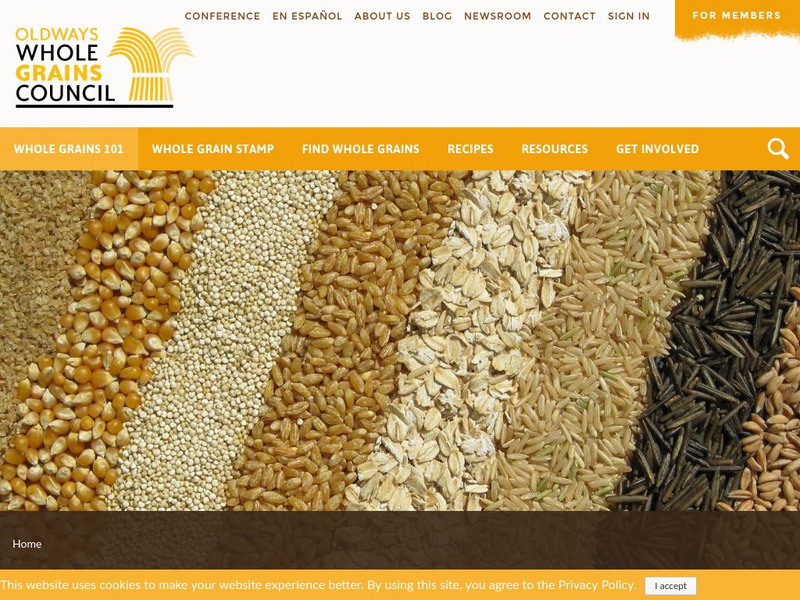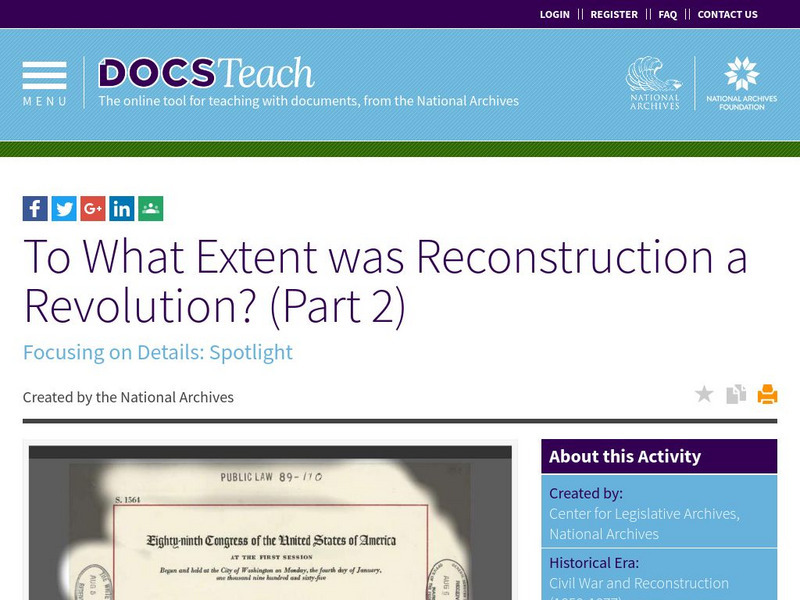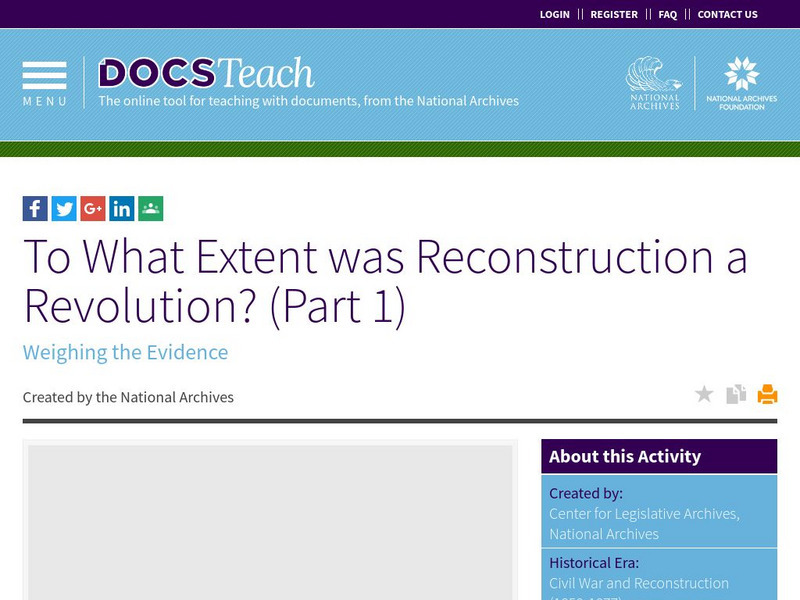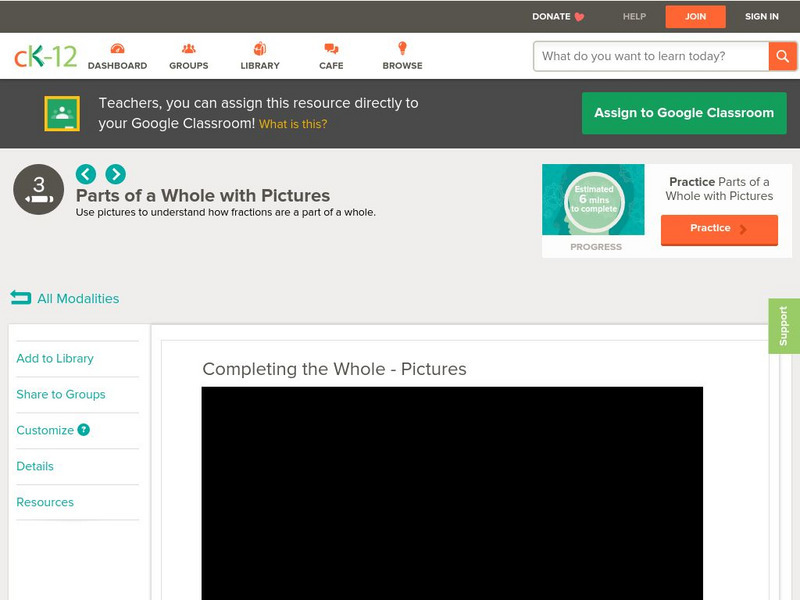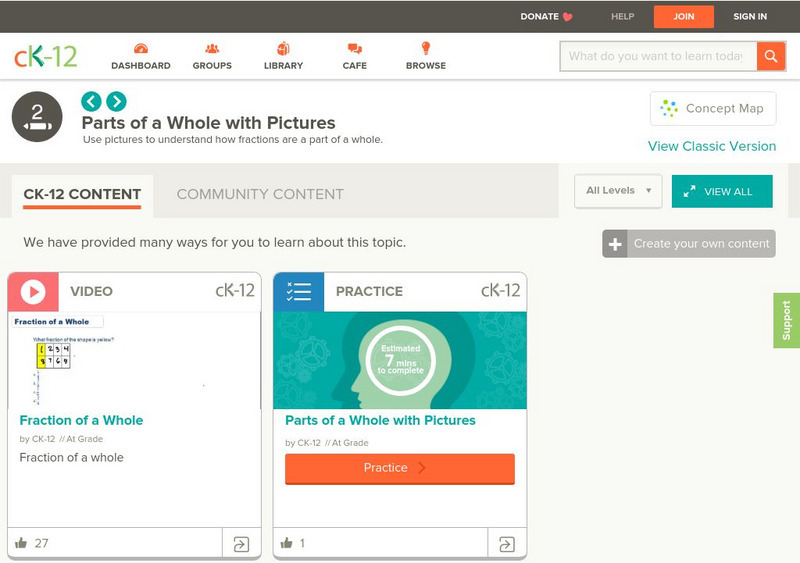New York State Education Department
TASC Transition Curriculum: Workshop 4
Why is it important to use precise language? Participants explore this question in the fourth activity in a series of 15 on effective instruction. Perfect for all content areas, the activity promotes appropriate language choice through...
American Psychological Association
Sexual Orientation and Youth
A 24-page manual provides principals, educators, and other school personnel with factual information about sexual orientation development, important legal principles they must consider, and problematic efforts to change sexual...
University of Texas at Austin
Mathematics Teks Toolkit: To Be (Half) or Not to Be (Half)
Explore part to whole and part of a set with interlocking cubes.
Education Development Center
Tune in to Learning: What's a Fraction
Use this interactive lesson to learn about fractions. You will find equivalent fractions, compare fractions, and more. Immediate feedback is given to your answers. Links to related videos.
Other
Nearpod: Decomposing Numbers to 10
In the lesson on decomposing numbers, students will use number bonds to help them decompose numbers up to 10. They will also review key vocabulary terms, like decompose, number bonds, parts, and whole.
CK-12 Foundation
Ck 12: Elem Math: Fraction of a Whole
[Free Registration/Login may be required to access all resource tools.] Students watch a video and attempt practice problems on determining what part of a whole has been shaded.
Other
Whole Grains Council: Whole Grains 101
Whole grains are an important part of your diet. This article discusses the advantages of whole grains, how you can incorporate them into your meals, and there are even some recipes to try.
US National Archives
National Archives: To What Extent Was Reconstruction a Revolution? (Part 2)
This is a continuation of part 1 of the instructional activity "To What Extent was Reconstruction a Revolution?". Students will study the Voting Rights Act of 1965 to see if their opinion changes from the previous instructional activity....
US National Archives
National Archives: To What Extent Was Reconstruction a Revolution? (Part 1)
Should Reconstruction be viewed as a revolution or not? Using primary source documents, students can weigh the evidence and come up with their conclusion. This instructional activity can be used as a whole class, small group, or...
CK-12 Foundation
Braingenie: Whole Number Percentage Calculations Without Units
[Free Registration/Login may be required to access all resource tools.] In this activity, students are to determine the percent of a number. Watch a video for additional help and answer a practice problem.
Better Lesson
Better Lesson: Domino Addition: Understanding the Part/part/whole Relationship
The big idea of this lesson plan is the understanding that addition can be represented as parts of a whole and that we can use addition sentences to represent those parts.
Better Lesson
Better Lesson: A Whole and Its Parts
Second graders take fractions apart and put them back together to form a whole.
CK-12 Foundation
Ck 12: Elem Math: Completing the Whole Pictures
[Free Registration/Login may be required to access all resource tools.] Students watch a video and then attempt practice problems on how to complete a whole picture with some missing parts.
Better Lesson
Better Lesson: Compare Parts of a Whole
Given a set of fractions students will be able to compare unit fractions by using models to determine that the more equal parts there are in the whole, the smaller each part will be. This instructional activity includes a detailed plan,...
ReadWriteThink
Read Write Think: Whole to Parts Phonics Instruction: Letter Sound Correspondences
Contains plans for two lessons that use the whole-to-parts phonics approach to beginning reading. It uses onset and rime to group word families and spelling patterns to show sounds in context. In addition to objectives and standards,...
Alabama Learning Exchange
Alex: Fraction Fun
The students will participate in a hands-on instructional activity about dividing a whole object into parts. They will also practice simple addition.This lesson plan was created as a result of the Girls Engaged in Math and Science...
CK-12 Foundation
Ck 12: Elem Math: Completing the Whole Add Together
[Free Registration/Login may be required to access all resource tools.] The interactive practice problems involve completing the whole by determining what portion of the diagram or fraction are missing to make the whole. When students...
Alabama Learning Exchange
Alex: Understanding Fractions
In this lesson the children will demonstrate parts of a whole using a candy bar (or fruit), and piece of paper. The activities are used as instructional plans to help students better understand shapes and parts of a shape up to a whole....
CK-12 Foundation
Ck 12: Elem Math: Fraction of a Whole
[Free Registration/Login may be required to access all resource tools.] The video describes how to determine the fraction from a model of partially shaded whole. The video is followed by a series of practice questions to assess student...
Khan Academy
Khan Academy: Relate Fractions to 1
Practice with fractional parts related to one whole.
International Literacy Association
International Literacy Association: How to Help Students Interpret Digital Texts
How can we help students to move beyond summary and toward interpretation? A combination of digital popular culture modeling, heuristics, and choice - along with digital composition - can initiate that process. Interpretation combines...
Better Lesson
Better Lesson: I Would Like to Be a Part of the Group!
Fourth graders will work in teams to discover how to read and write fractions that name a part of a group. The instructional activity will use a fraction pad so students can see how a number names a part of a whole or a part of a group....
Other
Nearpod: Percents: Finding the Part
In this lesson, students will learn how to find the missing part when given the percent and the whole.
Other
Help With Fractions: Rules and Definitions
The rules and definitions of fractions are clearly explained at this website. Numerators and denominators are illustrated and explained. This is an excellent place to get the basic foundation for fractions.
